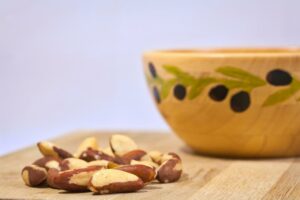
Source: Pixabay CC
During a stimulating academic discussion, I was once asked….”When does one start aging?….well I did not hesitate even a moment to reply….”The moment you are born!” The scientific concept of gerontology is divided into chronological aging and biochemical aging.
As the name suggests, chronological aging is the age as a number by birth, while biochemical aging is when the body loses its cellular optimization in an unnatural and pre-empted, and premature manner.
The second concept can certainly be retarded through holistic dietary and lifestyle practices. The diet must contain adequate macronutrients, micronutrients, and water.
Among the micronutrients, Selenium has generated interest as a dietary component with promising anti-aging potential.
Here are some insights-
The role of Selenium in the body is emphatic. The class of proteins which synthesize nucleic acids and help safeguard infections, inflammation, and infection all contain Selenium. In fact, they are known as ‘Selenoproteins’.
Selenoproteins play a pivotal role in the fertility projection of both genders. Additionally, they are involved in reproductive function, thyroid hormone metabolism, and regulation.
Before a discussion on Selenium-rich foods, it is a gainful exercise to examine bodily signs of Selenium deficiency. Some prominent projections are…
- muscular dysfunction
- fatigue and lethargy
- alopecia
- mental degeneration
- immune compromise
- and aspects related to reproductive function in both genders.
Selenium has a proven function in wound healing, dermatological repair, and even prevention of acne.
Did you know Selenium is an effective anti-oxidant?
Smoking, excess alcohol use and stress can cause an excess of free radicals that leads to oxidative stress, which damages healthy cells in the body.
Oxidative stress is known to cause chronic conditions like heart disease, diabetes, inflammatory disorders, asthma, Alzheimer’s, multiple sclerosis, and cancer.
Selenium helps reduces oxidative stress by neutralizing excess free radicals and protecting cells from damage caused by oxidative stress. This helps in lowering the risk of cancer and heart disease.
Selenium is known to reduce cancer risk due to its ability to not just reduce oxidative stress, but also boost the immune system, and destroy cancer cells.
Selenium also helps lower heart disease risk by reducing inflammation and oxidative stress.
Studies have shown that supplementing with selenium foods such as brazil nut improved verbal fluency and other mental functions in patients with mild cognitive impairment.
Foods rich in Selenium
Spinach, cooked from frozen, provides the body with 10 to 12 mg of selenium per cup. Some other dietary sources of Selenium are brazil nuts, ham, oysters, sunflower seeds, chicken, cottage cheese, bananas, and pork to name a few.
Most of our common foods, however, contain a very low level of selenium; for example, the Selenium content of garlic is below 0.03 to 0.05 micrograms per gram of garlic.
So is Selenium really co-linked to Ageing? Scientifically yes….as radiolabelling studies indicate. Hence, patients with the symptoms are prescribed supplements of Selenium.
As a dietary supplement, the recommended dose is 100-200mg of selenium daily to improve overall health and increase one’s resistance to different diseases. 400mg of selenium per day should not be taken without consulting your doctor.
When taken by mouth: Selenium is likely safe when taken in doses less than 400 mg daily, short-term. But selenium is possibly unsafe when taken in high doses or for a long time. Taking doses above 400 mg daily can increase the risk of developing selenium toxicity. Signs of selenium toxicity include hair loss, dizziness, vomiting, and tremors.
The selenium content in different foods depends on the amount of selenium in the soil where the food has been cultivated. Rainfall, rate of evaporation, pesticide content in the soil, and levels of acidity can all affect selenium levels in the soil.
Hence, the selenium content of plants is dependent upon the amount of selenium in the soil.
In conclusion, some points to ponder….regardless of one’s geographic location, certain factors can make it more difficult for the body to absorb selenium. Some examples of these factors are patients with Crohn’s disease, patients who are HIV positive, subjects on dialysis, and people with depigmentation of the skin.
Sign up for the QuackTrack.org newsletter below!














